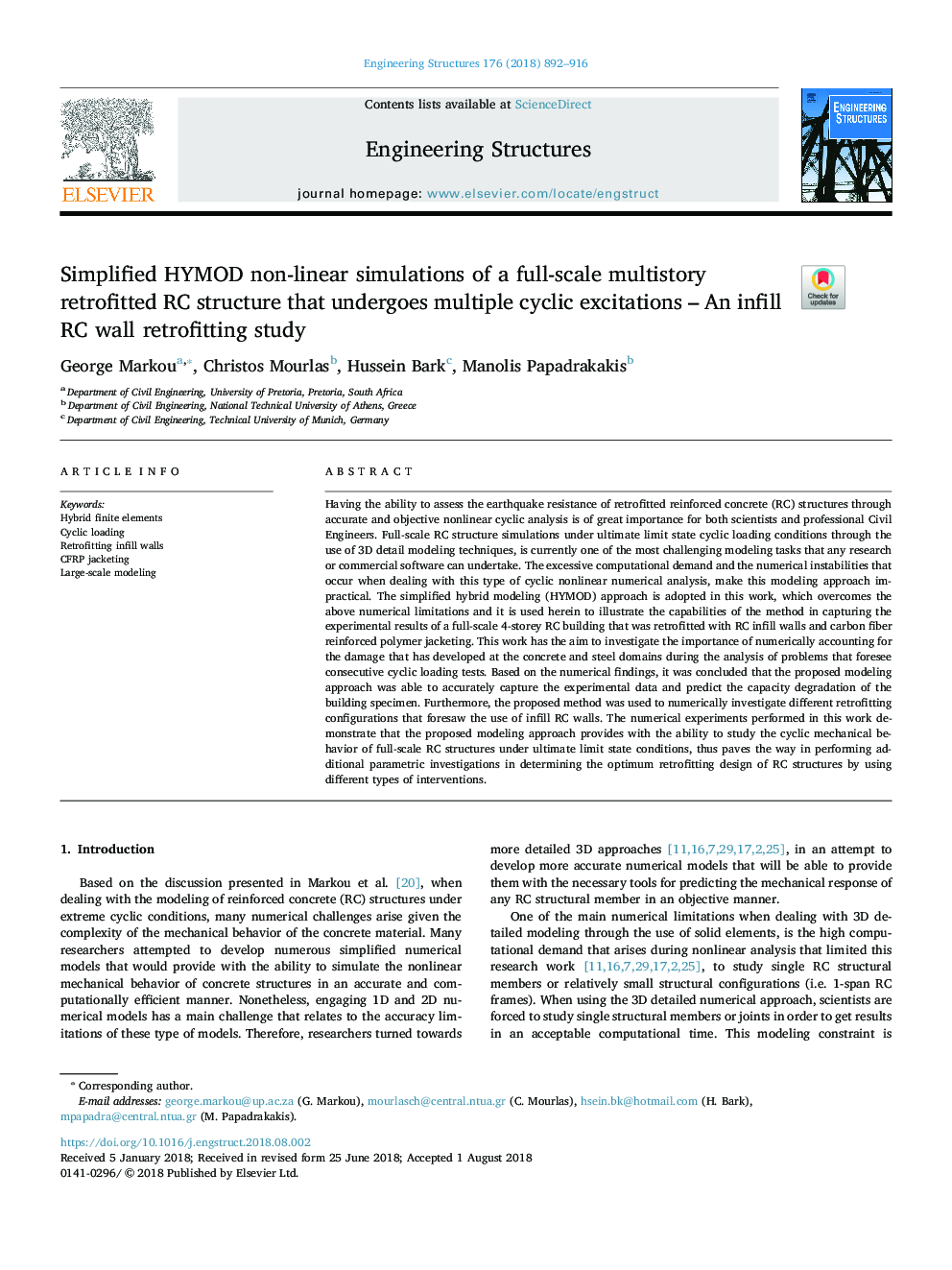| Article ID | Journal | Published Year | Pages | File Type |
|---|---|---|---|---|
| 11028944 | Engineering Structures | 2018 | 25 Pages |
Abstract
Having the ability to assess the earthquake resistance of retrofitted reinforced concrete (RC) structures through accurate and objective nonlinear cyclic analysis is of great importance for both scientists and professional Civil Engineers. Full-scale RC structure simulations under ultimate limit state cyclic loading conditions through the use of 3D detail modeling techniques, is currently one of the most challenging modeling tasks that any research or commercial software can undertake. The excessive computational demand and the numerical instabilities that occur when dealing with this type of cyclic nonlinear numerical analysis, make this modeling approach impractical. The simplified hybrid modeling (HYMOD) approach is adopted in this work, which overcomes the above numerical limitations and it is used herein to illustrate the capabilities of the method in capturing the experimental results of a full-scale 4-storey RC building that was retrofitted with RC infill walls and carbon fiber reinforced polymer jacketing. This work has the aim to investigate the importance of numerically accounting for the damage that has developed at the concrete and steel domains during the analysis of problems that foresee consecutive cyclic loading tests. Based on the numerical findings, it was concluded that the proposed modeling approach was able to accurately capture the experimental data and predict the capacity degradation of the building specimen. Furthermore, the proposed method was used to numerically investigate different retrofitting configurations that foresaw the use of infill RC walls. The numerical experiments performed in this work demonstrate that the proposed modeling approach provides with the ability to study the cyclic mechanical behavior of full-scale RC structures under ultimate limit state conditions, thus paves the way in performing additional parametric investigations in determining the optimum retrofitting design of RC structures by using different types of interventions.
Related Topics
Physical Sciences and Engineering
Earth and Planetary Sciences
Geotechnical Engineering and Engineering Geology
Authors
George Markou, Christos Mourlas, Hussein Bark, Manolis Papadrakakis,
